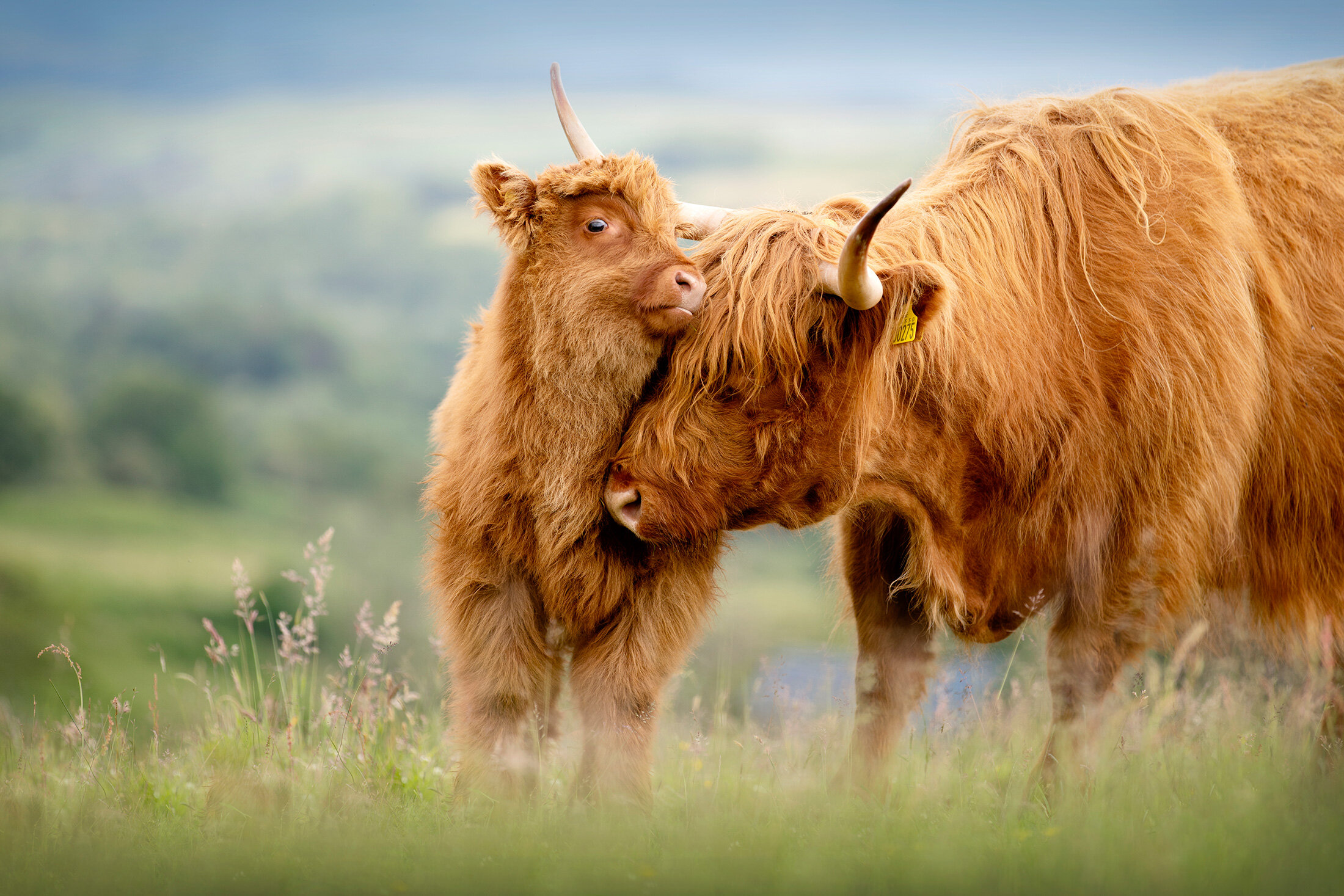Using genetics
The genetic tools provided by Igenity® Beef can help you improve your bottom line
For those of you with pedigree animals, you will know that we have asked for tissue samples at birth notification or registration for all calves born since the start of 2021.
Primarily, this is to use genetics going forward to improve the integrity of the Herd Book. But already, semen for export comes from bulls whose sire and dam have had their DNA recorded.
Demand is also coming from the export market where complete parentage is often required by DNA validation (both sire and dam). There are also signs that this will, in future, be required across the beef supply chain (not only no horse meat but complete parent traceability).
A further reason is to eventually use genetics to calculate Genetic Estimated Breeding Values for Highland Cattle. This is a much longer-term view, which will need many samples and also recording of physical characteristics of the animals (called phenotypes).
One way of starting to use the tissue samples beyond simple parentage verification is to measure certain genetic traits. The Society is initially looking at the genetic traits produced by Neogen’s Igenity Beef® scheme.
The traits measured
Neogen has produced sixteen traits from taking DNA and physical measurements from 1,000s of animals produced by all sorts of methods (ie. feed lots, open range), all of which are commercial cattle. There were no Highlands in the samples they used.
-
A higher score means higher birth weight potential. Heavy calves can cause calving difficulties, but also have more growth potential. (Calving Ease Direct (CED) or Calving Ease Maternal (CEM) in selection indexes are preferred over BW alone.)
-
There’s a greater probability calves will be born unassisted out of a first calf heifer, including birth weight and shape of calf. A higher value means greater calving ease.
-
This includes all genetic factors that impact a first-calf heifer’s ability to calve unassisted, such as pelvic area and her genetics for birth weight. A higher value is more calving ease.
-
A heifer’s potential to conceive during breeding season, relative to other heifers. A higher valve is desired.
-
Kg of calf weaning weight due to dam’s milk production. Optimise ‘milk’ to the forage environment.
-
The chance the heifer will remain in the herd as a productive cow until at least six years of age. A higher value is desired.
-
Genetic potential to be calm or to have calm offspring. Higher value indicates a higher probability of an acceptable disposition.
-
Difference in average 205-day weight. The higher the number, the greater the weaning weight of calves.
-
Based on Kg gain per day. The Igenity Daily Gain (ADG) identifies potential for post-weaning growth.
-
Difference in average 365-day weight. The higher the number, the greater the yearling weights.
-
This is an indicator of feed efficiency. It is the difference in an animal’s daily consumption of feed to achieve the same level of daily gain. Lower RFI indicates greater feed efficiency.
-
The higher the marbling, the higher the quality grade.
-
Rib-eye area as measured on the carcass. REA measures the area of muscling at the 12th rib. Larger REA progeny have more muscle and higher percentage of retail product.
-
Back-fat as measured on a carcass. Fat thickness is scored as depth of fat over the rib-eye muscle at the 12th rib. Higher fat thickness score equates to lower lean yield.
-
Genetic potential for beef tenderness. A higher 1-10 score is more tender.
-
Un-chilled weight of a beef carcass. The higher the HCW, the greater the dressing out percentage.
If you do use Igenity® Beef (and SeekSire™️) for these additional tests, you do not need to send your sample to the Society, but you do need to fill out a form that tells the Society that you have a direct relationship with Neogen.
So how can you use your results?
Well within your herd you may want to decide which heifers or bulls to keep for the future and use these results to do the selections. You may want to breed from animals who have the greatest stay-ability score or have the best easy calving index or docility.
Remember though this is only part of the story, nature versus nurture. If you keep your animals on nothing, then they won’t grow. If you finish them on different feed stuffs, you could increase the marbling.
It also doesn’t cover conformation or breed standards, they could have the best genetic scores ever but can’t walk well, or may have bad feet, or look ugly or have wonky horns.
In October 2021, Dr Iain Graham of Killochries fold gave a presentation about Igenity profiles and the importance of using DNA scores in the current marketplace. If this is of interest, you can download his slides by clicking on the button below.


